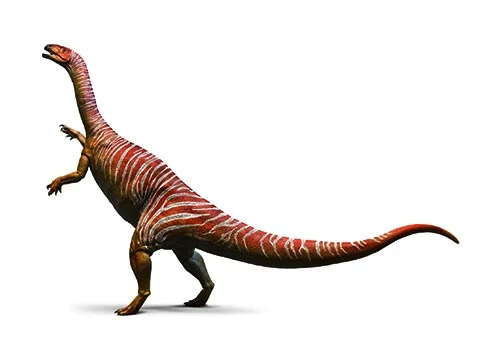Plateosaurus (Broad lizard)

Plat-e-o-sore-us
Christian Erich Hermann von Meyer - 1837
Herbivore
Estimated 9 meters long
Sauropod
P. engelhardti (type), P. gracilis
France, Germany, Switzerland
Late Triassic, 214-204 million years ago
Plateosaurus Facts
Plateosaurus is a dinosaur genus that lived in what is now Europe during the Late Triassic Period, about 214 to 204 million years ago. The name “Plateosaurus” comes from the Greek words “platys,” which means “flat,” and “sauros,” which means “lizard,” referring to the dinosaur’s flat bones.
Plateosaurus was a bipedal, herbivorous dinosaur that could grow up to 9 meters (30 feet) long and weigh up to 4 tons. It had a long neck, a small head, and a bulky body. Its forelimbs were shorter than its hind limbs and ended in five-fingered hands. The hind limbs had three-toed feet and were well-suited for running.
One of the most distinctive features of Plateosaurus was its broad, flat teeth that were ideal for grinding plant material. It likely fed on ferns, horsetails, and other vegetation that was abundant in its environment. Plateosaurus may have also had a simple digestive system that allowed it to extract as much nutrition as possible from its food.
Plateosaurus is one of the most well-known early dinosaurs, and it played an important role in the evolution of these ancient creatures. It was one of the first dinosaurs to evolve a large size, and it may have served as an ancestor to other large sauropod dinosaurs. Additionally, Plateosaurus was one of the first dinosaurs to evolve adaptations for herbivory, and its flat teeth and powerful jaws are thought to have paved the way for later plant-eating dinosaurs.



